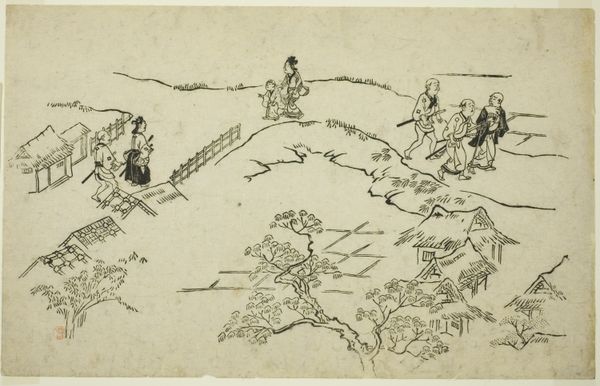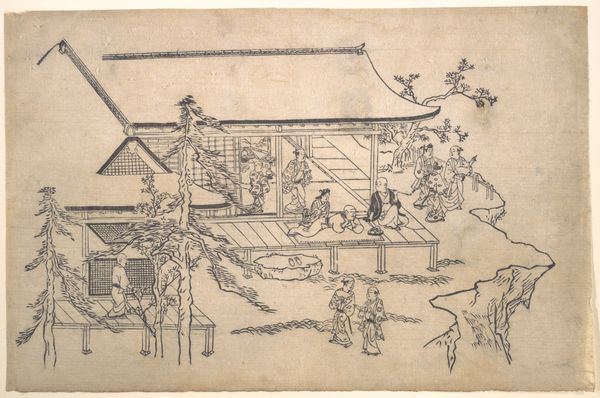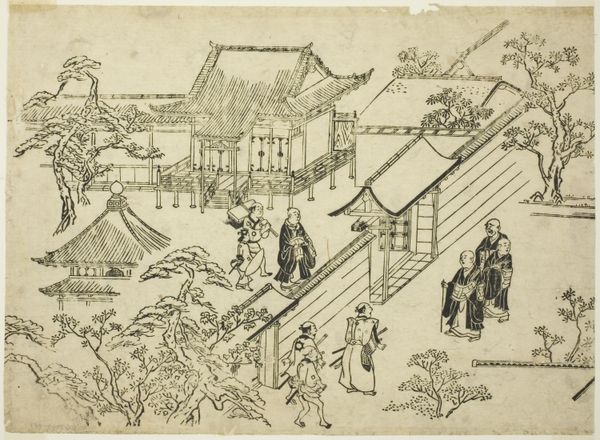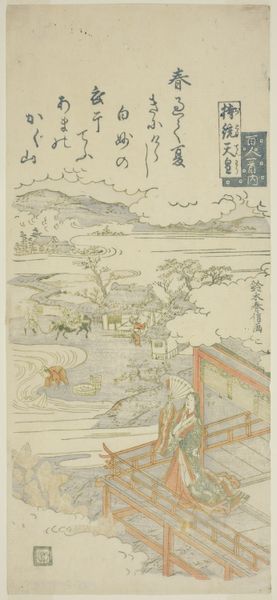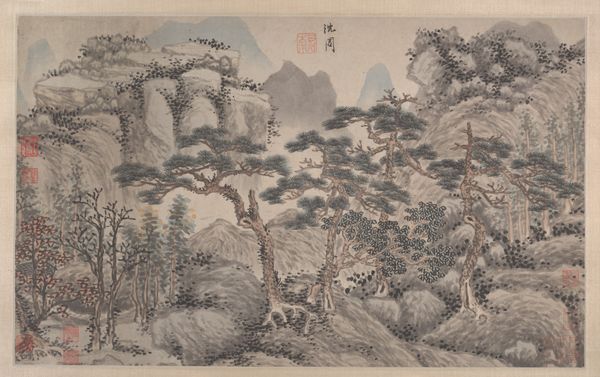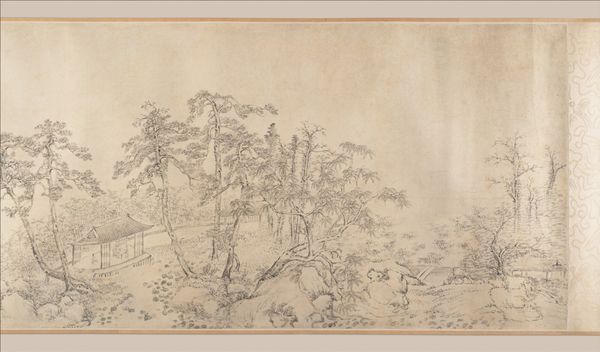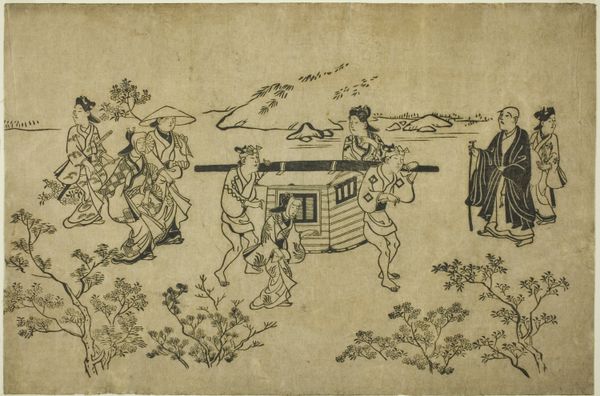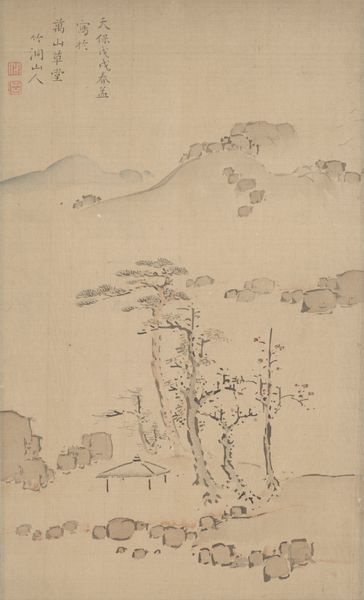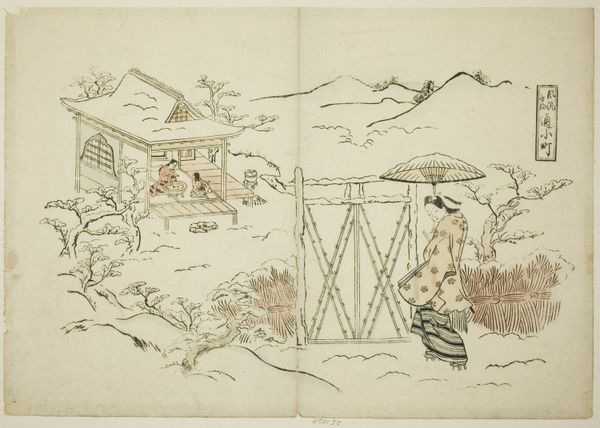
Kiyomidzu Temple in Kyoto 1615 - 1868
0:00
0:00
print, ink, woodblock-print, woodcut
#
tree
#
pen drawing
# print
#
asian-art
#
landscape
#
ukiyo-e
#
japan
#
personal sketchbook
#
ink
#
ink drawing experimentation
#
woodblock-print
#
woodcut
#
men
#
line
#
cityscape
Dimensions: 10 1/4 x 16 3/4 in. (26 x 42.5 cm)
Copyright: Public Domain
Curator: Hishikawa Moronobu's woodcut print, Kiyomidzu Temple in Kyoto, produced sometime between 1615 and 1868, captures a moment of quietude. Editor: It’s a simple composition, almost sparse, but that line work! It gives the scene an elegant, breezy feel. Curator: The ukiyo-e tradition to which Moronobu belonged arose with the development of a sophisticated merchant class and a widespread commercial publishing industry in Edo. It’s amazing to think about how these prints were relatively affordable and widely distributed. Editor: I see that availability in the technique, in the very visible lines and shapes. It's a constructed landscape, using the woodcut to create flatness, juxtaposing different elements in distinct planes, almost diagrammatic. How interesting that it’s found within this highly industrialized form. Curator: It is the material accessibility that gave ukiyo-e its power to disseminate images and ideas to a broad public. Look closely at the people. Their clothes, their activities…These are markers of a particular moment in the economy of leisure. This image captures the production of culture and consumerism, as ordinary citizens began participating in the floating world. Editor: Yes, and visually, the robes of the figures become intricate patterns of the whole. Note how that contrasts with the clean, deliberate outlines of the architecture. Curator: Precisely! That building isn't just architecture, it's a symbol of social mobility through travel and tourism. Editor: But look at how the eye travels; Moronobu uses delicate linework, really drawing out the nuances in each object in the work. This allows the image to transcend mere reproduction to enter something more. Curator: The network of artisanal production that enabled its creation is something we also must note. Its reproduction and consumption by the masses shaped desires and ideas that altered society. Editor: True, the work's circulation definitely tells its own story. What I love about the work's graphic language are these tensions that define it—accessibility versus intentional design, realism versus fantasy. It is almost a portal into the complex moment in time. Curator: The fact that the work gives us access to that historical moment through its existence as a tradable commodity—made by human hands—gives me great respect for the possibilities within material existence.
Comments
No comments
Be the first to comment and join the conversation on the ultimate creative platform.
